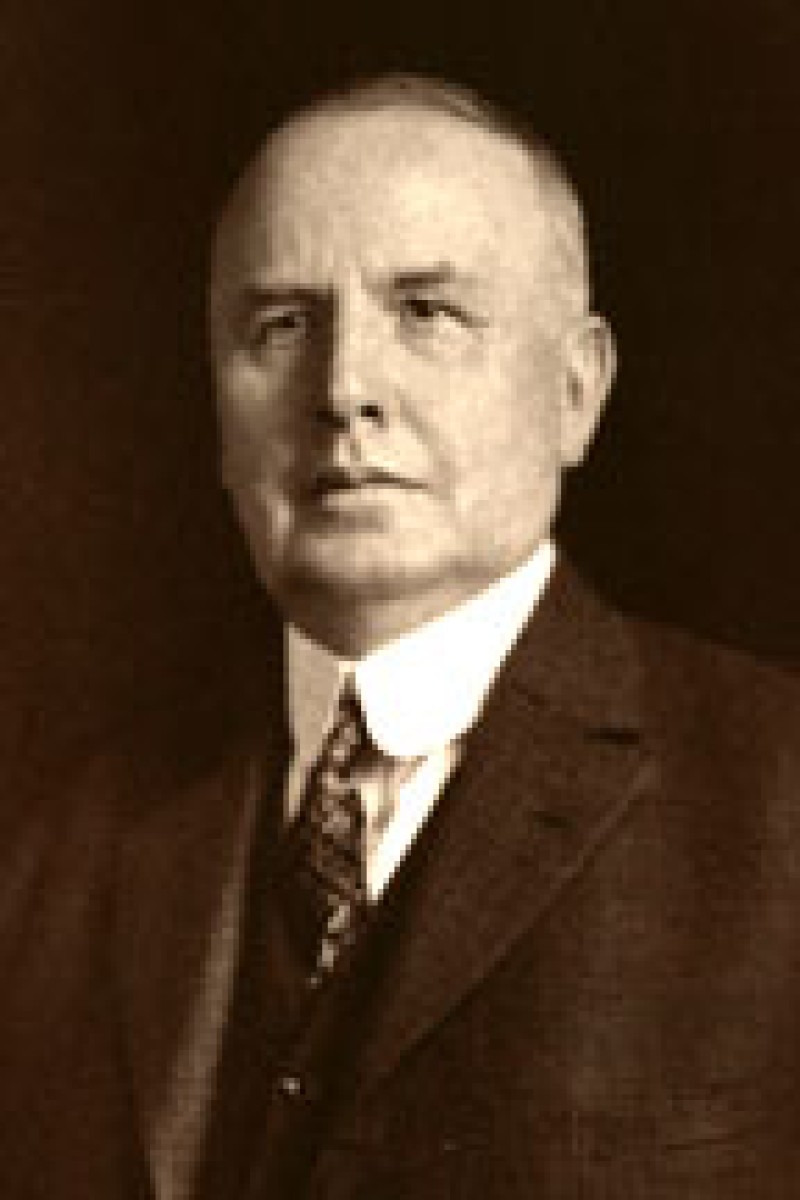Hugh L. Nichols
Hugh L. Nichols had the distinction of serving as the first Chief Justice of the Supreme Court of Ohio after that office was created by the 1912 amendment to the Ohio Constitution.
Nichols was born on March 25, 1865 to Perry Jackson and Jeanette Gilmore Nichols in New Richmond, Ohio. He attended New Richmond public schools, graduated from Batavia High School in 1880 and enrolled at Ohio Wesleyan University, where he graduated in 1884.
Nichols attended Cincinnati Law School and graduated with a bachelor’s degree in 1886. The same year, he was admitted to practice law in the state of Ohio. He joined his brother, Allen, in the legal firm of Nichols and Nichols in Batavia, where he practiced from 1886 to 1913.
He was elected and served as a Democratic state senator from 1897-1899 in the 73rd Ohio General Assembly, but did not seek re-election.
Gov. Judson Harmon appointed Nichols as lieutenant governor on March 1, 1911. Nichols was elected to the post in November 1912, the same year James M. Cox was elected governor of Ohio. The 1912 constitutional convention submitted an amendment to the 1851 constitution to the voters that would create the elected office of Chief Justice of the Supreme Court. Voters approved the amendment during a special election held on Sept. 3, 1912. The Chief Justice’s office was not filled in the November 1912 general election, so Gov. Cox asked the Democratic members of the Supreme Court to agree on a person he could appoint. When they could not, he appointed Nichols. He took the oath of office on Sept. 22, 1913. Nichols was elected to a full six-year term in 1914. He was defeated for re-election in 1920 by Carrington T. Marshall.
Amendments passed at the 1912 special election provided for changes in the judicial process by permitting laws to be passed that authorized a decision by only three-fourths of the jury in a civil case, as well as permitted depositions from people who could not be present at the trial. Legislation was passed allowing lawsuits to be brought against the state of Ohio. Many of these reforms were opposed by members of the judiciary and numerous attorneys. To Nichols came the delicate task of implementing these new procedures. An editorial in the Dec. 24, 1920 edition of The Ohio State Journal praised him, “Under his guidance the changes were introduced, put into effect, and the new practice started with the minimum of friction, and they have been kept in continuous and successful service through the years that followed.”
Nichols’ opinion in the 1915 case Merrick v. Ditzler is often cited. The Supreme Court examined the question of the degree of proof needed in a civil case. The defendant took the plaintiff, a 10-year-old girl, from the Allen County Ohio Children’s Home. In his house, she was treated as a family member. She contended that the defendant promised her in July 1903 that he would give her the sum of $500, clothing and room and board until she reached age 18. He denied making such an agreement. The decision turned on the standard of proof required by the employee. The jury found in favor of the plaintiff and awarded her $500. The Allen County Court of Appeals reversed the jury verdict. The Supreme Court sided with the employer and wrote that “clear and convincing” proof must be supplied. Nichols defined it as, “The term ‘clear and convincing’ has come to have a well-defined meaning with the bench and bar. It indicates a degree of proof required in criminal cases, but more than required in ordinary civil action.”
After losing re-election in 1920, Nichols founded the law firm of Nichols, Wood, Marx and Ginter in Cincinnati. He was the senior partner in this firm until his death in 1942.
In 1922, he was appointed chairman of the U.S. Grant Memorial Centenary Association, which directed the restoration of the Grant birthplace in Point Pleasant and induced the state of Ohio to acquire the surrounding land. At the celebration, President Warren G. Harding was the principal speaker.
Nichols’ life was characterized by his many acts of charity. His memorial tribute stated, “He really believed it was more blessed to give than to receive and he practiced it continuously throughout his life…Food, coal, and clothing were often delivered by tradesmen to his less fortunate neighbors, who never knew from whom it came.”
Nichols and Louise Dean Stirling were married on March 2, 1887. He affectionately called her “Dean.” They had no children.
On Oct. 19, 1942, Nichols was admitted to Jewish Hospital in Cincinnati with a fractured vertebra. He never left the hospital, where he died Dec. 29, 1942 of coronary thrombosis. The funeral was Dec. 31, 1942 at William S. Moore Funeral Home in Batavia, with burial in Batavia Union Cemetery.

b. March 25, 1865
d. Dec. 29, 1942
80th Justice of the Supreme Court of Ohio
TERM
Sep 22, 1913
to Dec 31, 1920
